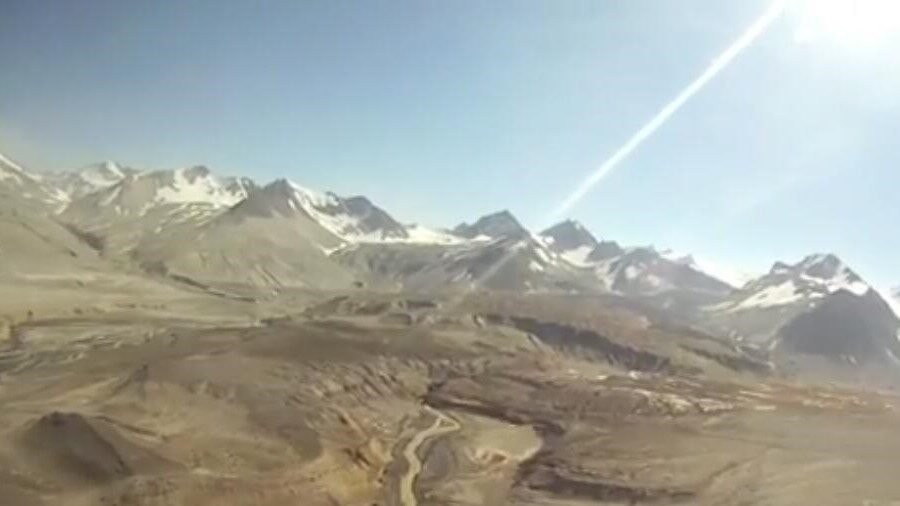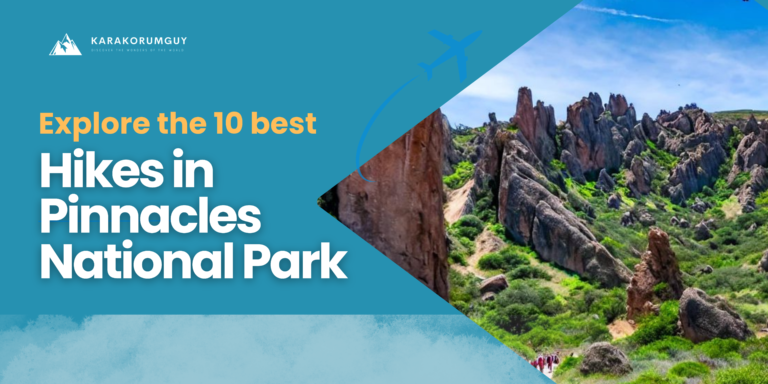Revealing Ten Thousand Smokes Hiking Trails

Hiking enthusiasts are always on the lookout for trails that combine breathtaking scenery with a sense of adventure and discovery. One such destination that perfectly fits the bill is the Valley of Ten Thousand Smokes. It has some of the most famous hiking trails in the world. They’re surrounded by stunning scenery and interesting geothermal spots. In this article, we’ll take a closer look at the famous ten thousand smokes hiking trails and discover why they’re a top choice for enthusiastic hikers. Let’s have a look.
Introduction
The Valley of Ten Thousand Smokes is relatively lesser known compared to some other natural attractions. Despite its incredible geological significance and stunning landscapes, it may not be as widely recognized as more famous national parks or landmarks. However, for those who venture to explore it, the Valley of Ten Thousand Smokes offers a truly remarkable and unforgettable experience.
It is located in Alaska, USA within Katmai National Park and Preserve. It’s a unique place filled with thousands of steam vents and fumaroles caused by volcanic activity. For hikers, it offers breathtaking views of steaming landscapes, colorful mineral deposits, and fascinating geological formations. It’s an adventurous destination where you can witness the power of nature up close and enjoy the beauty of a volcanic landscape.
History and Formation
The Valley of Ten Thousand Smokes is a place in Alaska that got its name from all the steam and smoke coming out of the ground. This valley was created by a huge volcano called Novarupta that erupted in 1912. When the volcano exploded, it sent out a lot of hot ash and gas that settled in the valley. Over time, the hot ash cooled down, but the gas kept coming out of the ground, creating thousands of steam vents. It’s a unique and fascinating place to visit, but it’s also a reminder of the power of nature.

Preparation for Hiking
Hiking in the Valley of Ten Thousand Smokes is like stepping into another world. It offers exciting opportunities for tourists. As you explore this unique landscape, you can marvel at the towering volcanic ash cliffs, steaming fumaroles, and colorful geothermal features. Hiking trails wind through the valley, allowing you to witness the raw power of nature up close while immersing yourself in breathtaking scenery. Whether you’re a beginner or experienced hiker, the Valley of Ten Thousand Smokes promises an unforgettable adventure amidst the wonders of Alaska’s wilderness.
Hiking Trails
Ten Thousand Smokes Hiking trails play a crucial role in allowing visitors to explore and appreciate the natural wonders of the Valley safely. These trails offer opportunities for both casual strolls and challenging treks, ensuring that visitors of all skill levels can experience the beauty of this unique landscape. Here are some popular hiking trails in the area:
1. Novarupta Trail
1.1. Overview:
The Novarupta Trail offers an incredible journey into the heart of the Valley of Ten Thousand Smokes, showcasing the aftermath of one of the most powerful volcanic eruptions in modern history. Hikers will witness the raw power of nature as they traverse this unique landscape.
1.2. Route Description:
The Novarupta Trail begins at the designated trailhead and winds its way through a landscape dominated by volcanic ash and rugged terrain. Hikers will ascend gradually, offering panoramic views of the surrounding valley. The trail leads to the base of the Novarupta Volcano, where visitors can explore the remnants of the historic eruption. Be sure to follow trail markers and stay on designated paths to minimize impact on the fragile ecosystem.
1.3. Challenges, Time to Complete and Difficulty Level:
- Uneven terrain with loose volcanic ash and rocks.
- Limited shade and exposure to the elements, including wind and sun.
- Potential for encountering wildlife, including bears, so caution is advised.
- Time to Complete – Approximately 4-6 hours round trip, depending on hiking pace and exploration time.
- Difficulty level is Moderate to strenuous, due to uneven footing and potential for encountering wildlife.
2. Dumpling Mountain Trail:
2.1 Overview:
The Dumpling Mountain Trail provides hikers with an opportunity to escape into the serene wilderness of Katmai National Park, offering breathtaking vistas and diverse ecosystems along the way.
2.2 Route Description:
The Dumpling Mountain Trail begins at the trailhead and ascends gradually through dense forests and alpine meadows. As hikers climb higher, they are rewarded with panoramic views of the surrounding landscape. The trail passes near Dumpling Mountain, offering opportunities for exploration and photography. Be sure to bring plenty of water and snacks, as there are limited amenities along the route.
2.3 Challenges, Time to Complete and Difficulty Level:
- Steep inclines and rocky terrain may challenge inexperienced hikers.
- Variable weather conditions, including rain and wind, can impact visibility and trail conditions.
- Bear encounters are possible, so hikers should carry bear spray and practice proper wildlife safety measures.
- Time to Complete – Approximately 6-8 hours round trip, depending on hiking pace and exploration time.
- Difficulty level is Moderate to strenuous, with sections of steep elevation gain and rocky terrain.
3. Katmai Pass Trail:
3.1. Overview:
The Katmai Pass Trail offers hikers a chance to traverse rugged terrain and witness the diverse ecosystems of Katmai National Park, including alpine tundra, boreal forests, and glacial valleys.
3.2. Route Description:
The Katmai Pass Trail begins at the designated trailhead and follows a series of switchbacks as it ascends into the alpine zone. Hikers will traverse rocky terrain and cross mountain streams as they make their way toward Katmai Pass. The trail passes through diverse ecosystems, offering opportunities for wildlife viewing and photography. Be sure to carry all necessary gear, including camping equipment and bear-proof food containers, as the trail passes through bear habitat.
3.3. Challenges, Time to Complete and Difficulty Level:
- Remote location with limited amenities and cell phone reception.
- Variable weather conditions, including snow and high winds, can impact trail conditions.
- Navigation skills may be required, especially in areas with minimal trail markings.
- Time to Complete – Approximately 2-3 days for the full through-hike, depending on hiking pace and camping arrangements.
- Difficulty level is strenuous, due to rugged terrain, variable weather conditions, and remote location.
4. Ukak Falls Trail
4.1. Overview:
The Ukak Falls Trail offers hikers a chance to experience the beauty and power of one of Katmai National Park’s most iconic waterfalls, with stunning views of the surrounding landscape along the way.
4.2. Route Description:
The Ukak Falls Trail begins at the trailhead and winds its way through lush forested areas along the Ukak River. Hikers will encounter several scenic viewpoints overlooking the falls, providing ample opportunities for photography. The trail is well-maintained but can be muddy and slippery in places, so sturdy footwear is recommended. Be sure to stay on designated paths and follow all posted signage for safety.
4.3. Challenges, Time to Complete and Difficulty Level:
- Trail can be muddy and slippery, especially after rain.
- Wildlife encounters, including bears, are possible, so hikers should carry bear spray and practice proper wildlife safety measures.
- Limited amenities at the trailhead, so hikers should bring plenty of water and snacks.
- Time to Complete – Approximately 2-3 hours round trip, depending on hiking pace and time spent at the falls.
- Difficulty level is easy to moderate, with some sections of uneven terrain and elevation gain.
5. Windy Creek Trail:
5.1. Overview:
The Windy Creek Trail offers hikers a rugged and remote adventure through the untamed wilderness of Katmai National Park, with opportunities to explore pristine landscapes and encounter diverse wildlife.
5.2. Route Description:
The Windy Creek Trail begins at the trailhead and follows the course of Windy Creek through dense forested areas and open meadows. Hikers will traverse rocky terrain and cross several small streams as they make their way deeper into the wilderness. The trail passes through bear habitat, so hikers should exercise caution and carry bear spray. Be prepared for variable weather conditions and rugged terrain, and ensure you have all necessary camping gear if planning an overnight trip.
5.3. Challenges, Time to Complete and Difficulty Level:
- Remote location with limited amenities and cell phone reception.
- Variable weather conditions, including rain and high winds, can impact trail conditions.
- Trail may be overgrown or difficult to follow in places, requiring navigation skills.
- Time to Complete – Approximately 1-2 days for a full through-hike, depending on hiking pace and camping arrangements.
- Difficulty level is moderate to strenuous, due to rugged terrain and remote location.
6. Mount Griggs Trail:
6.1. Overview:
The Mount Griggs Trail offers hikers an opportunity to summit one of the iconic peaks of the Katmai volcanic region, providing stunning views of the surrounding landscape and a sense of accomplishment.
6.2. Route Description:
The Mount Griggs Trail begins at the trailhead and ascends steadily through dense forested areas and alpine meadows. As hikers climb higher, the terrain becomes increasingly rocky and steep. The final stretch of the trail involves scrambling over boulders and navigating narrow ridgelines to reach the summit of Mount Griggs. Be sure to bring plenty of water, food, and appropriate gear for changing weather conditions. Navigation skills and experience with mountain hiking are recommended for this challenging route.
6.3. Challenges, Time to Complete and Difficulty Level:
- Steep and rugged terrain with significant elevation gain.
- Variable weather conditions, including snow and high winds, can impact trail conditions.
- Remote location with limited amenities and potential for encountering wildlife.
- Time to Complete – Approximately 8-10 hours round trip, depending on hiking pace and weather conditions.
- Difficulty level is strenuous, due to steep inclines and rugged terrain.
7. Valley of Ten Thousand Smokes Road:
7.1. Overview:
The Valley of Ten Thousand Smokes Road offers visitors a unique opportunity to explore the vast expanse of the valley by vehicle, providing access to scenic viewpoints and hiking trails along the way.
7.2. Route Description:
The Valley of Ten Thousand Smokes Road begins at the designated entrance point and winds its way through the valley, passing by scenic viewpoints, hiking trails, and interpretive exhibits. Visitors can drive the entire length of the road or choose to explore specific areas of interest along the way. Be sure to obey all posted signs and regulations, and respect the fragile nature of the volcanic landscape.
7.3. Challenges, Time to Complete and Difficulty Level:
- Rough and uneven road conditions, requiring a high-clearance vehicle.
- Limited services and amenities along the road, so visitors should come prepared with food, water, and other necessities.
- Wildlife encounters, including bears, are possible, so visitors should exercise caution and practice proper wildlife safety measures.
- Time to complete – Varies depending on stops and activities along the road, but allow at least half a day for exploration.
- Difficulty level is easy, as it’s primarily a driving route with opportunities for short walks and hikes at designated stops.
8. Knife Creek Trail:
8.1. Overview:
The Knife Creek Trail offers hikers a scenic journey through lush forests and along rushing creeks, providing opportunities for wildlife viewing and peaceful reflection in the heart of Katmai National Park.
8.2. Route Description:
The Knife Creek Trail begins at the trailhead and follows the course of Knife Creek through dense forested areas and open meadows. Hikers will traverse rocky terrain and cross several small streams as they make their way deeper into the wilderness. The trail offers several scenic viewpoints overlooking Knife Creek and opportunities for wildlife viewing. Be sure to bring plenty of water and snacks, as there are limited amenities along the route.
8.3. Challenges, Time to Complete and Difficulty Level:
- Trail can be muddy and slippery, especially after rain.
- Limited signage and trail markers in some sections, so hikers should pay close attention to navigation.
- Wildlife encounters, including bears, are possible, so hikers should carry bear spray and make noise while hiking.
- Time to Complete – Approximately 4-6 hours round trip, depending on hiking pace and time spent exploring.
- Difficulty level is moderate, with some sections of uneven terrain and elevation gain.
9. Valley Floor Trail:
9.1. Overview:
The Valley Floor Trail offers hikers a leisurely stroll through the heart of the Valley of Ten Thousand Smokes, providing opportunities to explore the unique geological features and diverse ecosystems of this volcanic landscape.
9.2. Route Description:
The Valley Floor Trail begins at the trailhead and meanders through the valley, offering close-up views of the volcanic features and unique geological formations. Interpretive exhibits along the trail provide information about the area’s volcanic history and the processes that have shaped the landscape. Be sure to stay on designated paths and follow all posted signage for safety.
9.3. Challenges, Time to Complete and Difficulty Level:
- Trail can be dusty and exposed to the elements, including wind and sun.
- Limited shade along the route, so hikers should come prepared with sun protection.
- Wildlife encounters, including bears, are possible, so hikers should carry bear spray and make noise while hiking.
- Time to Complete – Approximately 2-3 hours round trip, depending on hiking pace and time spent exploring.
- Difficulty level is easy, with mostly flat terrain and well-maintained trails.
10. Baked Mountain Trail:
10.1. Overview:
The Baked Mountain Trail presents an exciting opportunity for hikers to explore the rugged beauty of the Valley of Ten Thousand Smokes, offering stunning vistas and a glimpse into the geological history of the region.
10.2. Route Description:
The Baked Mountain Trail begins at the designated trailhead and winds its way through a landscape dominated by volcanic ash and rugged terrain. Hikers will ascend gradually, offering panoramic views of the surrounding valley. The trail leads to the base of Baked Mountain, where visitors can explore the unique geological features formed by volcanic activity. Be sure to follow trail markers and stay on designated paths to minimize impact on the fragile ecosystem.
10.3. Challenges , Time to Complete and Difficulty Level:
- Steep inclines and rocky terrain may challenge inexperienced hikers.
- Limited shade and exposure to the elements, including wind and sun.
- Potential for encountering wildlife, so caution is advised.
- Time to Complete – Approximately 4-6 hours round trip, depending on hiking pace and exploration time.
- Difficulty level is moderate to strenuous, due to uneven footing and potential wildlife encounters.
Experiencing Wildlife
One of the highlights of hiking in the Valley of Ten Thousand Smokes is the opportunity to observe a diverse range of wildlife in its natural habitat. From brown bears and caribou to foxes and ptarmigans, the valley is teeming with life, providing endless opportunities for wildlife enthusiasts and photographers alike.
Photography Tips for Capturing the Beauty
The Valley of Ten Thousand Smokes is full of beautiful landscapes and wildlife. If you’re going there to take photos, bring a camera with different lenses and accessories. This will help you capture all the different amazing things you see, like landscapes, animals, and close-up details.
Best Time to Visit
The best time to go for hiking in the Valley of Ten Thousand Smokes is during the summer, from June to early September. It’s warmer and there’s more daylight, which makes hiking easier. Also, you can see more wildlife, like bears and birds, during this time.
Planning Your Trip: Practical Considerations
Before embarking on a hiking trip to the Valley of Ten Thousand Smokes, it’s essential to plan ahead and make necessary arrangements to ensure a safe and enjoyable experience. Be sure to check current trail conditions, obtain any required permits or passes, and familiarize yourself with park regulations and guidelines to minimize impacts on the environment and fellow visitors. Let’s explore more about it.
1. How to Get There
The Valley is located within Katmai National Park and Preserve in Alaska, USA. Here’s how you can get there:
- Fly to Anchorage and Travel to King Salmon:
- Most visitors to the Valley of Ten Thousand Smokes start their journey in Anchorage, Alaska’s largest city.
- From Anchorage, you’ll need to take a flight to King Salmon, a small town located near Katmai National Park.
- Arrange Transportation:
- Once in King Salmon, you’ll need to arrange transportation to Brooks Camp, which is the primary access point for visitors to the Valley of Ten Thousand Smokes. You can either take a small plane from King Salmon to Brooks Camp or take a bus provided by the National Park Service.
- Hiking or Guided Tour:
- From Brooks Camp, you have several options to reach the Valley of Ten Thousand Smokes. You can embark on a multi-day backpacking trip, hiking along established trails. Alternatively, you can join a guided tour offered by the National Park Service, which typically includes transportation to the valley, guided hikes, and educational programs.
Remember to plan your trip well in advance, especially if you’re considering joining a guided tour, as availability may be limited during peak seasons. Additionally, be prepared for the remote and rugged nature of the Alaskan wilderness, including unpredictable weather conditions and encounters with wildlife.
2. Safety Tips for Hikers
If you’re planning to hike in the Valley of Ten Thousand Smokes, it’s important to prioritize safety. Here are some tips:
- Check air quality advisories before heading out and avoid hiking during times of poor air quality.
- Wear a high-quality N95 or P100 respirator mask to protect against smoke inhalation.
- Carry essential hiking gear such as a map, compass, GPS device, first aid kit, plenty of water, snacks, extra clothing layers, and a flashlight. A dust mask or respirator may be necessary if there’s volcanic ash in the air.
- Stay hydrated by drinking plenty of water throughout the hike.
- Keep an eye on the direction of the wind to avoid walking into areas with heavy smoke.
- Inform someone about your hiking plans and expected return time.
- Stay on marked trails to minimize the risk of getting lost in smoky conditions.
- Carry a fully charged cell phone and a portable charger for emergencies.
- Be mindful of your physical limitations and don’t push yourself too hard in smoky conditions.
- If you have respiratory issues or are sensitive to smoke, consider postponing your hike until air quality improves.
- Monitor local news and weather updates for any changes in smoke conditions.
By following these safety tips, you can have a rewarding and safe hiking experience in the Valley of Ten Thousand Smokes.
3. Equipment Checklist
Here’s a basic equipment checklist for hiking in the Valley of Ten Thousand Smokes:
3.1. Backpack and Hiking Boots:
- A comfortable, durable backpack to carry all your gear.
- Sturdy, broken-in hiking boots with good ankle support.
3.2. Clothing:
- Moisture-wicking base layers
- Insulating layers (fleece or down jacket)
- Waterproof and breathable outer shell (jacket and pants)
- Extra socks
- Hat, gloves, and scarf
3.3. Navigation:
- Map of the area
- Compass or GPS device
- Trail guidebook (if available)
3.4. First Aid Kit:
- Bandages
- Antiseptic wipes
- Pain Relievers
- Blister Treatment, and any personal medications.
3.5. Water, Food and Emergency Shelter:
- Sufficient water bottles or a hydration system to stay hydrated throughout the hike.
- High-energy snacks like trail mix, energy bars, and dried fruits.
- A lightweight emergency shelter or space blanket.
3.6. Sun Protection:
- Sunscreen with high SPF
- Sunglasses
- Hat with a brim
3.7. Other Items
- Waterproof matches, a lighter, or a fire starter kit.
- Multi-tool or Knife for various tasks and emergencies.
- Headlamp or Flashlight With extra batteries.
- Whistle For signaling in emergencies.
- Personal Locator Beacon (PLB) or Satellite Messenger for remote communication and emergency assistance.
- Trash Bags to pack out any waste.
- Camera (Optional) to capture the stunning scenery.
- Carry the permits required for hiking in the area.
- Insect Repellent Depending on the season, insects can be prevalent in the valley.
- Trekking Poles (Optional) but can be helpful, especially on uneven terrain.
- Carry identification and a note with emergency contact information in case of accidents.
Before heading out, ensure you’re familiar with the specific conditions and challenges of hiking in the Valley of Ten Thousand Smokes, and adjust your gear accordingly.
4. Permits and Regulations for Hiking
To hike in the Valley of Ten Thousand Smokes in Alaska, there are a few permits and regulations you need to be aware of:
4.1. Permits:
- If you plan to camp overnight, you’ll need a backcountry permit. These can typically be obtained from the National Park Service (NPS) office or visitor center.
- Day hiking generally doesn’t require a permit, but it’s always a good idea to check with the park authorities beforehand.
4.2. Regulations:
- Leave No Trace: Practice Leave No Trace principles to minimize your impact on the environment. This includes packing out all trash, staying on designated trails, and respecting wildlife.
- Campsite Regulations: If you plan to camp, you must use designated campsites and follow any specific regulations regarding camping in the Valley of Ten Thousand Smokes.
- Wildlife Regulations: Follow regulations regarding wildlife encounters, such as maintaining a safe distance from animals and properly storing food to prevent attracting wildlife.
- Fire Regulations: Check for any fire regulations in the area, especially if you plan to have a campfire. In some cases, fires may be prohibited or restricted to designated fire pits.
- Group Size Limits: There may be restrictions on the size of hiking groups allowed in certain areas. Be sure to adhere to these limits if they apply.
- Trail Closures: Occasionally, trails or areas within the park may be closed due to safety concerns or environmental reasons. Check for any closures or restrictions before your trip.
It’s important to familiarize yourself with all regulations specific to the Valley of Ten Thousand Smokes and to comply with them to ensure a safe and enjoyable hiking experience while also protecting the natural environment.
Local Services and Amenities for Hikers
In the Valley of Ten Thousand Smokes, hikers can find various local services and amenities to make their journey more comfortable and enjoyable. Here are some simple descriptions:
1. Services Available
For visitors to the Valley of Ten Thousand Smokes, nearby towns offer a range of services and amenities to enhance your stay. From lodging options and restaurants to outfitters and guided tours, you’ll find everything you need to make the most of your outdoor adventure.
2. Accommodation Options and Dining Choices
Whether you prefer rustic cabins and campgrounds or cozy bed and breakfasts, there are accommodation options to suit every taste and budget near the Valley of Ten Thousand Smokes. Likewise, dining choices range from casual cafes serving hearty meals to upscale restaurants showcasing locally sourced ingredients.
Nearby Attractions
In addition to its world-class hiking trails, the Valley of Ten Thousand Smokes is surrounded by a wealth of other attractions and activities for outdoor enthusiasts to enjoy. From fishing and kayaking in nearby rivers to exploring historic sites and cultural landmarks, there’s no shortage of adventures to be had in this corner of Alaska.
Testimonials and Reviews
Don’t just take our word for it—hear what fellow hikers have to say about their experiences in the Valley of Ten Thousand Smokes. From awe-inspiring encounters with wildlife to unforgettable moments spent beneath the stars, their testimonials offer insights and inspiration for your own outdoor adventure.
Conclusion
The Valley of Ten Thousand Smokes offers a truly unique hiking experience for outdoor enthusiasts. With its otherworldly landscapes, challenging trails, and opportunities for adventure, it beckons visitors to explore its wonders and immerse themselves in the beauty of nature. Whether you’re a seasoned hiker or a novice explorer, the Valley promises an unforgettable journey into the heart of one of Alaska’s most awe-inspiring landscapes.
Hope you found this article helpful! Click here and check out our more articles on hiking adventure.







